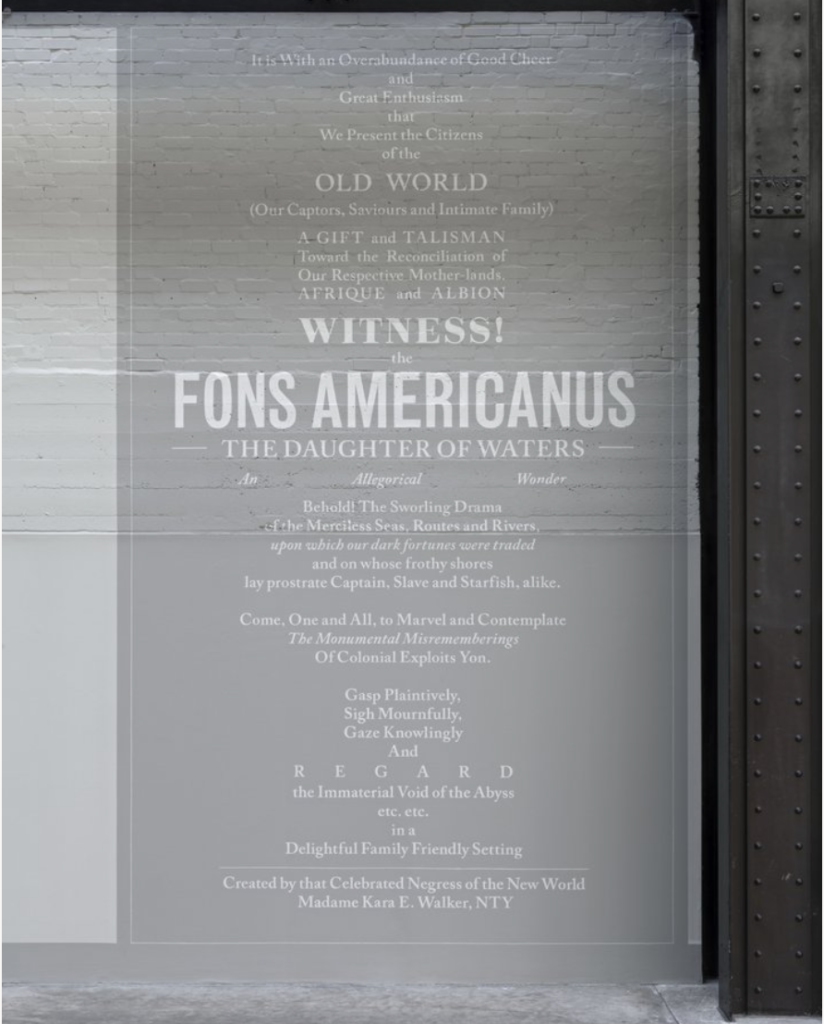Masterpiece Story: Allegorical Painting of Two Ladies
Allegorical Painting of Two Ladies is an enigmatic and highly unusual imaginative portrait made in 1650s England. It reveals a fascinating story...
Nicole Ganbold 14 October 2024
Kara Elizabeth Walker, born in 1969, is an American contemporary artist. She is known as a painter, silhouettist, print-maker, installation artist, and film-maker. In 2019, she made Fons Americanus, a large-scale public sculpture that tackled the issues of race and colonialism.
The Fons Americanus is an allegory of the Black Atlantic and really all global waters which disastrously connect Africa to America, Europe, and economic prosperity.
Kara Walker, in an interview with the Tate, 2019.






Fons Americanus played with the idea of monuments, such as the Victoria Memorial outside Buckingham Palace. It brought direct attention to the history of violence against Black people of Africa that underpins the history of empires.


















The full title was on the wall of the Tate’s Turbine Hall. The text encouraged us to confront a history often misremembered in the UK. On the photo above, Walker’s signature reads “Kara Walker, NTY”, or “Not Titled Yet”, in a play on British honors awards such as “OBE” (Order of the British Empire).
Walker used the art historical figure Venus several times in the artwork. For example, a smaller sculpture, Shell Grotto, sat in front of the main fountain. A scalloped shell (cf. Botticelli’s The Birth of Venus) encased a drowning boy.


















Shell Grotto referenced a colonial fortress on Bunce Island in Sierra Leone where men, women, and children were captured and sold into slavery.






The sculpture Fons Americanus confronted us with the historical violence against Black bodies and racism that continues today. It also challenged white supremacy in art history. Atop the fountain was a majestic black Venus taking center stage in the story that Walker is re-telling.






Fons Americanus reacted to the image titled The Voyage of the Sable Venus from Angola to the West Indies by Thomas Stothard (1755-1834). In it, Stothard portrayed Venus as an African woman as propaganda to promote the transatlantic slave trade.
The amniotic fluid at the beginning of this journey is now transformed into mother’s milk and lifeblood. Mother, whet nurse, whore, saint, Host, lover – she is the daughter of waters.
Kara Walker, in an interview with the Tate, 2019.
The fountain of Fons Americanus presented an allegory or extended metaphor of the Black Atlantic. This is an art term that describes the fusion of black cultures with other cultures from around the Atlantic. It is a term coined by Paul Gilroy in 1993 that argues that the culture around the Atlantic is deeply shaped by the slave trade. The Black Atlantic encompasses the work of other contemporary artists like Chris Ofili, Ellen Gallagher, and Glenn Ligon who explore blackness through a wide range of sources.






Walker’s figures all symbolized different ideas around the transatlantic slave trade and violence. They also referenced an array of art-historical, literary, and cultural material.
I looked at a grand panorama of a whaling voyage and considered the Black Atlantic as its been represented in art by Turner, Homer, Copley and sailors themselves…my fountain yokes together racist representation and violent expression of power.
Kara Walker, in an interview with the Tate, 2019.
























DailyArt Magazine needs your support. Every contribution, however big or small, is very valuable for our future. Thanks to it, we will be able to sustain and grow the Magazine. Thank you for your help!